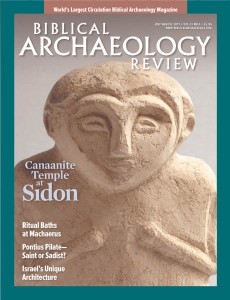The characteristic blue-green color of faience is reminiscent of the more precious lapis-lazuli and turquoise, both of which ancient Egyptians associated with their protective goddess Hathor. This made faience artifacts especially important in the religious practice of ancient Egypt. The production of faience involved forming an object from silica paste, coating it with a mix of minerals for the desired turquoise glaze and, finally, firing it in a furnace. Production centers during the Hellenistic period (332–30 B.C.E.) included Tell Atrib about 30 miles north of Cairo.
Tell Atrib
Tell Atrib 1985–1995, vol. 4, Faience Objects
Polish Archaeology in the Mediterranean Monograph Series 5
By Fabian Welc (Warsaw: Polish Centre of Mediterranean Archaeology, University of Warsaw, 2014), 280 pp., color and b&w illustrations, $110 (paperback)

This book publishes faience artifacts from Tell Atrib (Greek Athribis), where a Polish team conducted salvage excavations between 1985 and 1999. Since faience does not preserve well in the humid Nile Delta, many excavated objects have simply disintegrated. The 332 pieces published here represent only a selection of better preserved examples. These fall into two major categories: vessels and small statuary, including figurines of Egyptian divinities and amulets in the form of religious symbols.
Already a library member? Log in here.
Institution user? Log in with your IP address.

